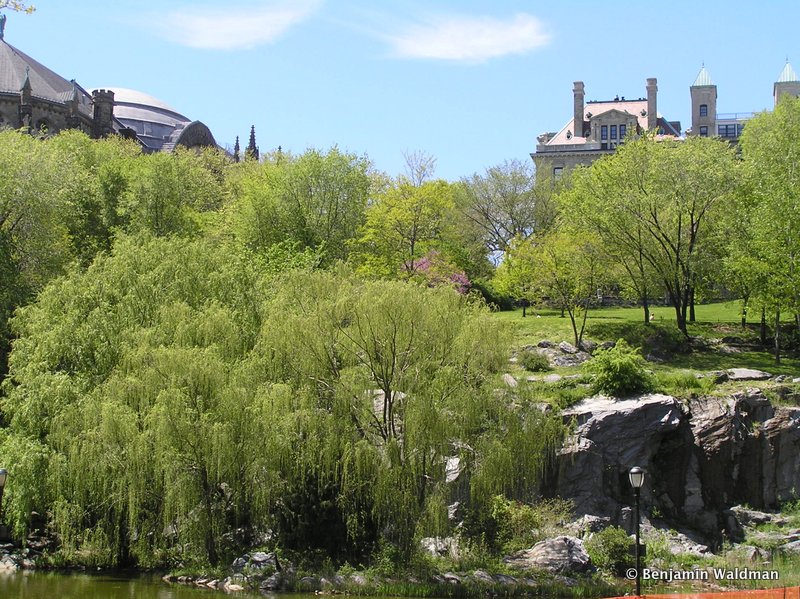4. Morningside Park

The idea for Morningside Park was proposed in 1867 by the Central Park commissioners, and the city later commissioned Frederick Law Olmsted and Calvert Vaux to design the park in 1873. Andrew Haswell Green, the mastermind behind Central Park, proposed that a park be built in Morningside Heights to avoid expanding the Manhattan street grid across steep terrain. By September 1873, Olmsted was dropped as superintendent of other parks to focus all efforts on Morningside Park, focusing on scenery due to terrain limitations. His design included a lawn at the park’s north end, a retaining wall with staircases, and ornate balconies.
The Panic of 1873 essentially halted construction, not just for that year but for the next 14 years. Jacob Wrey Mould, who contributed to the design of Central Park, was appointed the new architect of the park in 1880. Plans for Mould’s design, which featured a retaining wall at Morningside Drive with granite stairs and railings, were approved in August 1881, with additional plans submitted the next year. The next few years of the project were slow, as new plans were submitted by Julius Munckwitz. Stairways were built starting in 1885, and Mould died the following year. In 1887, Olmsted was asked to draft new plans for the park, but he refused unless Vaux also worked on it. After some debate, both were allowed to work on plans, which were modified due to the construction of the nearby elevated railway station. While Olmsted wanted the area to remain naturalistic, Vaux wanted additional paths added. Most construction work was completed by the early 1890s, almost 20 years after Olmsted first submitted plans.





